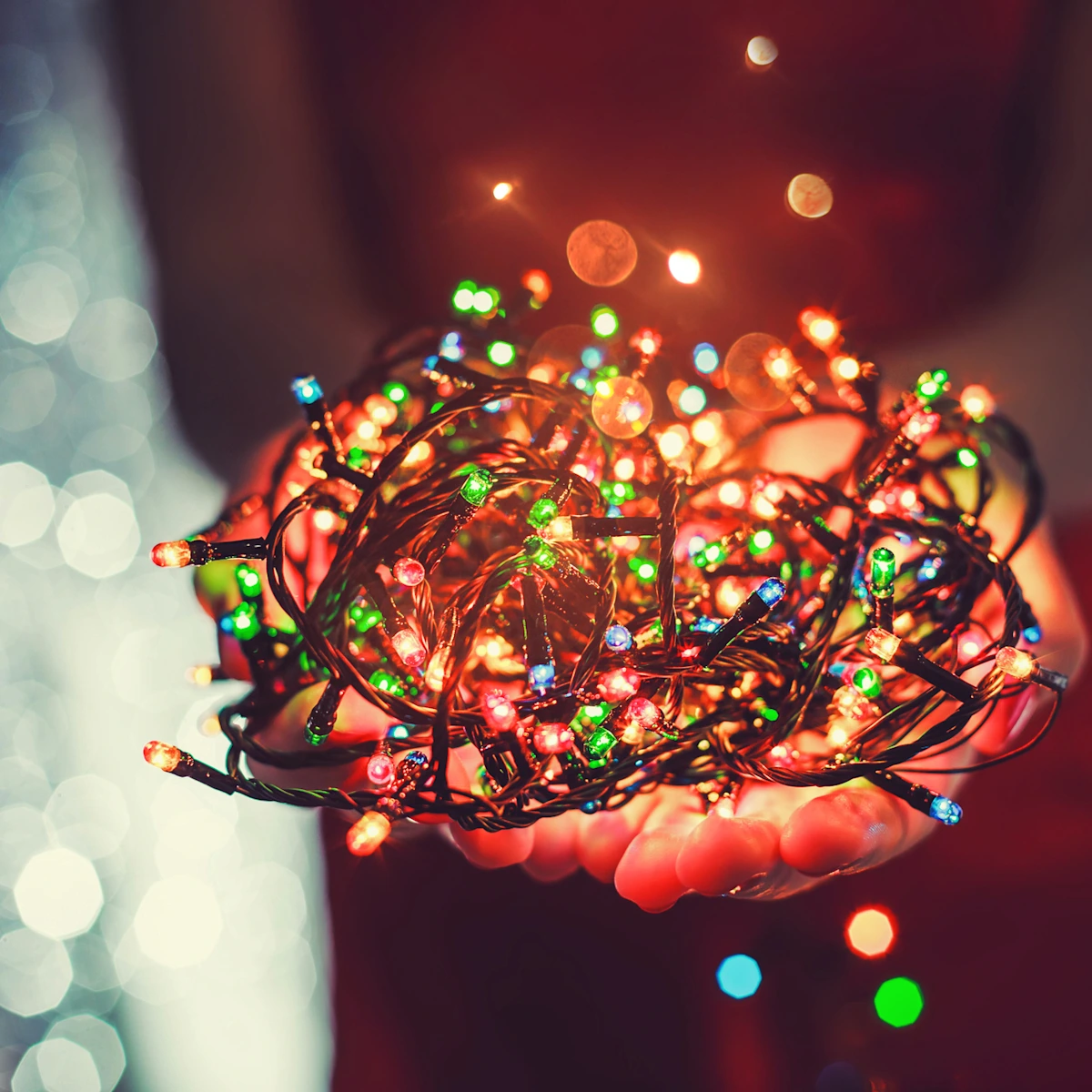15 Festive Facts About Christmas Lights

Christmas lights are more than just seasonal decorations; they represent the joy and warmth of the holiday season. With a rich history and modern innovations, these twinkling lights have become a global symbol of festivity.
Let’s explore 15 fascinating facts about Christmas lights, divided into meaningful themes.
1. The Origin of Christmas Lights
The concept of Christmas lights dates back to the 17th century in Germany, where people adorned their Christmas trees with candles. These candles symbolized the light of Christ and were carefully monitored to prevent fires, a stark contrast to the safe LED lights we use today.
2. Thomas Edison’s Bright Idea
Thomas Edison, famous for inventing the light bulb, is also credited with introducing the first strand of electric Christmas lights in 1880. Edison displayed these lights outside his laboratory to showcase the possibilities of electric lighting, sparking a new holiday tradition.
3. The First Christmas Tree Lights
Edward H. Johnson, an associate of Edison, is regarded as the “Father of Christmas Tree Lights.” In 1882, he hand-wired 80 red, white, and blue bulbs to illuminate his Christmas tree. Although initially considered a novelty, this marked the beginning of electric Christmas lighting.
4. The Shift from Candles to Bulbs
By the early 1900s, electric Christmas lights started replacing candles, primarily for safety reasons. General Electric began selling pre-assembled strings of lights in 1903, making the technology more accessible to the public.
5. Christmas Lights and the White House
The tradition of illuminating the White House Christmas tree began in 1923 during Calvin Coolidge’s presidency. This event introduced the practice of large public Christmas light displays, an enduring part of holiday celebrations in the U.S.
6. The Evolution of Light Bulbs
Initially, incandescent bulbs were used for Christmas decorations, but they were energy-intensive and fragile. With the invention of LED lights in the 1960s, Christmas lighting became more durable, efficient, and environmentally friendly.
7. Guinness World Records for Christmas Lights
The title for the most Christmas lights on a residential property has been broken multiple times. One remarkable record was set in 2014 by an Australian family who decorated their home with over 1.2 million lights, requiring intricate planning and enormous effort.
8. The Largest Public Light Displays
Some cities go above and beyond for Christmas. For example, Medellín, Colombia, is famous for its El Alumbrado, a massive light display featuring intricate designs. Similarly, New York’s Rockefeller Center showcases one of the world’s most iconic Christmas trees adorned with thousands of lights.
9. Synchronization with Music
Christmas light shows synchronized with music have become increasingly popular. Using computer programs, homeowners and organizations coordinate lights to “dance” to festive tunes, creating mesmerizing displays that attract crowds.
10. Christmas Lights Around the World
The use of Christmas lights varies globally. In Japan, illumination festivals during Christmas season draw millions of visitors, featuring themes like nature and fairy tales. In the Philippines, giant parol lanterns, made with LED lights, represent the Star of Bethlehem.
11. Environmental Impact
While Christmas lights bring cheer, they also consume significant energy. Modern LED lights, however, use up to 80% less electricity than traditional incandescent bulbs, making holiday decorations more sustainable.
12. The Trend of Smart Lights
Smart technology has transformed Christmas lighting. Smart light strings can change colors, patterns, and timings via smartphone apps, offering endless customization for holiday enthusiasts.
13. Light Displays for Charity
Many elaborate Christmas light displays serve a noble purpose. Families or organizations often collect donations for charities as visitors enjoy their festive decorations. This practice combines holiday spirit with community goodwill.
14. The Cost of Lighting
Despite advances in energy efficiency, large light displays can still be costly. For example, lighting the Rockefeller Center Christmas tree requires thousands of dollars in energy costs each year, emphasizing the scale of these festive traditions.
15. Christmas Lights in Popular Culture
Christmas lights have become iconic in movies and television, symbolizing the magic and chaos of the season. A notable example is the 1989 film National Lampoon’s Christmas Vacation, where an over-the-top light display captures both hilarity and holiday spirit.

Conclusion
Christmas lights are more than just decorations—they are steeped in history, tradition, and innovation. From their humble beginnings as candlelit trees in Germany to today’s dazzling LED displays, they continue to bring joy and connect communities worldwide. Whether adorning a single home or illuminating an entire city, these festive lights symbolize the enduring magic of the holiday season.